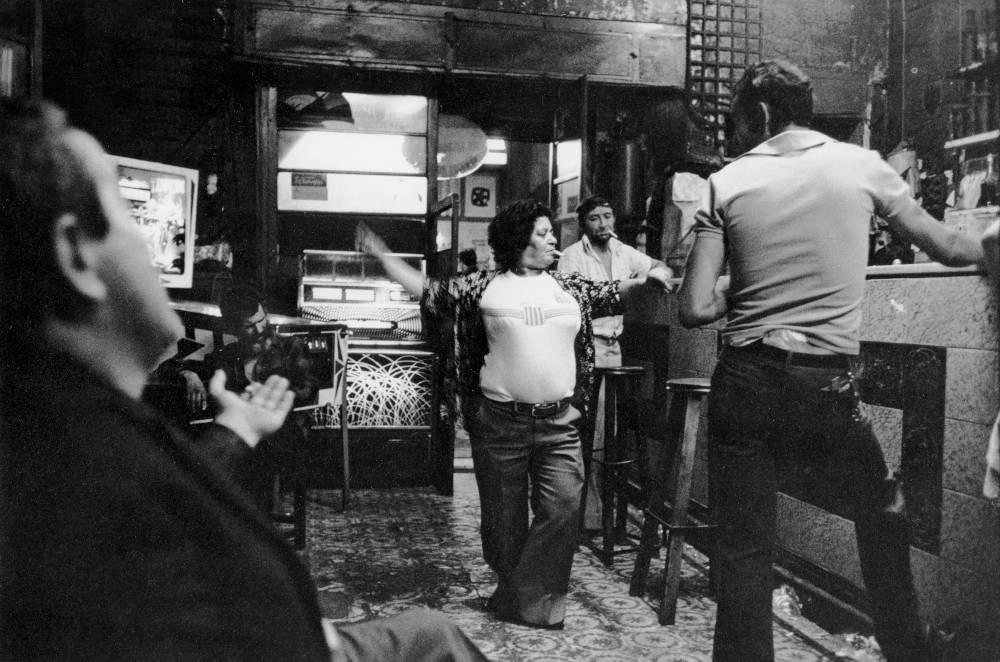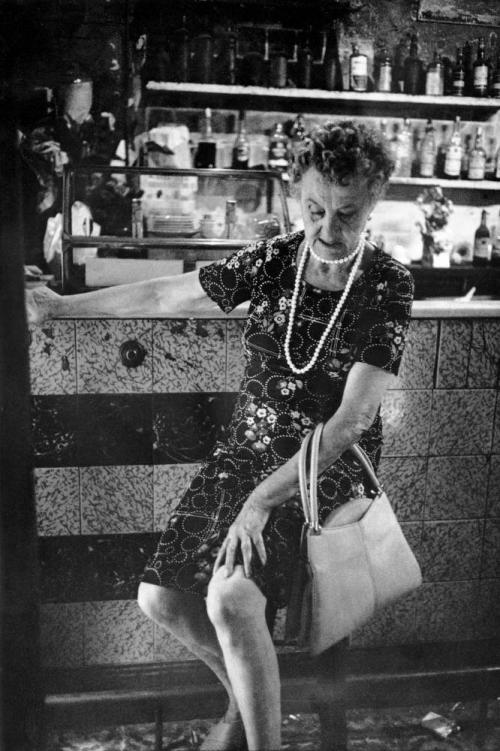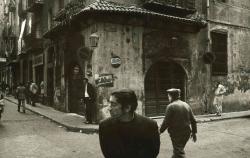Olvido's Bar
Rafel Bernis
09.06.2020 – 18.10.2020
Curator: Valentín Roma
During the year 1979, Rafel Bernis (Barcelona, 1945) photographed the comings and goings of the customers of a bar located at the heart of what was then known as the Barri Xino (Barcelona’s former red-light district), at the corner of Carrer Sant Ramon and Carrer Marquès de Barberà. Bernis mingled with the regular customers, and the presence of his camera did not disturb the establishment run by Olvido.
The result is a photographic series that documents a time and place in the history of Barcelona, portraying the use of spaces of social gathering and offering a backdrop to the urban planning inspired by the Spanish transition to democracy, which, taking culture as the spearhead, would transform life in the city in the near future.
Bernis’s images depart from the humanist realism that prevailed in Spanish photography between the mid-1950s and the early 1960s. They are also far from the work of the Catalan photographers of the 1970s, who challenged the previous generation by adopting a “creative” or art photography, as it was called at the time.
This photodocumentary inevitably recalls the Anders Petersen’s photographs of the Café Lehmitz in Hamburg, which appeared in a book published in the same period (1978), although they were taken in 1967. However, unlike Petersen’s photographs and other visual rhetorics that take an affectionate, discriminatory and benevolent approach to marginalization, what perhaps grants Olvido’s Bar a different status is the blurring of the boundaries between the political space of representation, the theatrical space of human relations and the fictional space of photography.
Though the bourgeois were often fascinated by the revelry of the lower classes, with their exotic habits and heroic idealizations, there are hardly any photographic documents illustrating the bars frequented by the immigrant lumpenproletariat in Barcelona during the transition from dictatorship to democracy.
Part of the importance of this series stems from its anachronism, from the image that it projects on the impending transformation of the Barri Xino into El Raval. Gentrification, combined with various urban interventions in the district, led to the disappearance of establishments like Olvido’s bar or a change in their clientele. The corner where Olvido’s bar was located has been converted into a square. Interestingly, it is called Plaça de Pieyre de Mandiargues, in homage to the author of the novel The Margin (1967), which portrays life in the brothels of Barcelona in the 1960s and is set in the same backstreets.
Viewed from the new socio-economic landscapes of El Raval, Olvido’s Bar documents a moment of contrast: Barcelona retained features of a small town while striving to be a metropolis; it was seeking to become a model, but large areas were still reluctant for Barcelona to become a brand name for tourism at the service of neoliberal economics.










